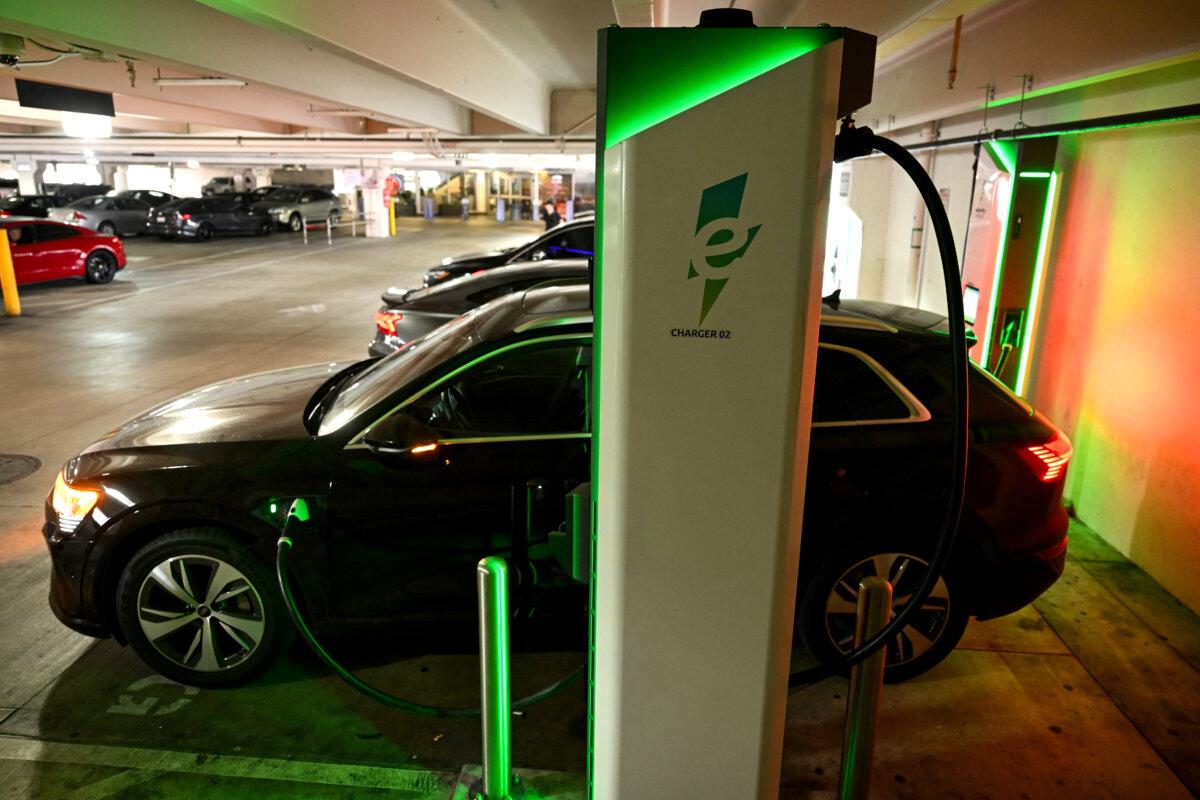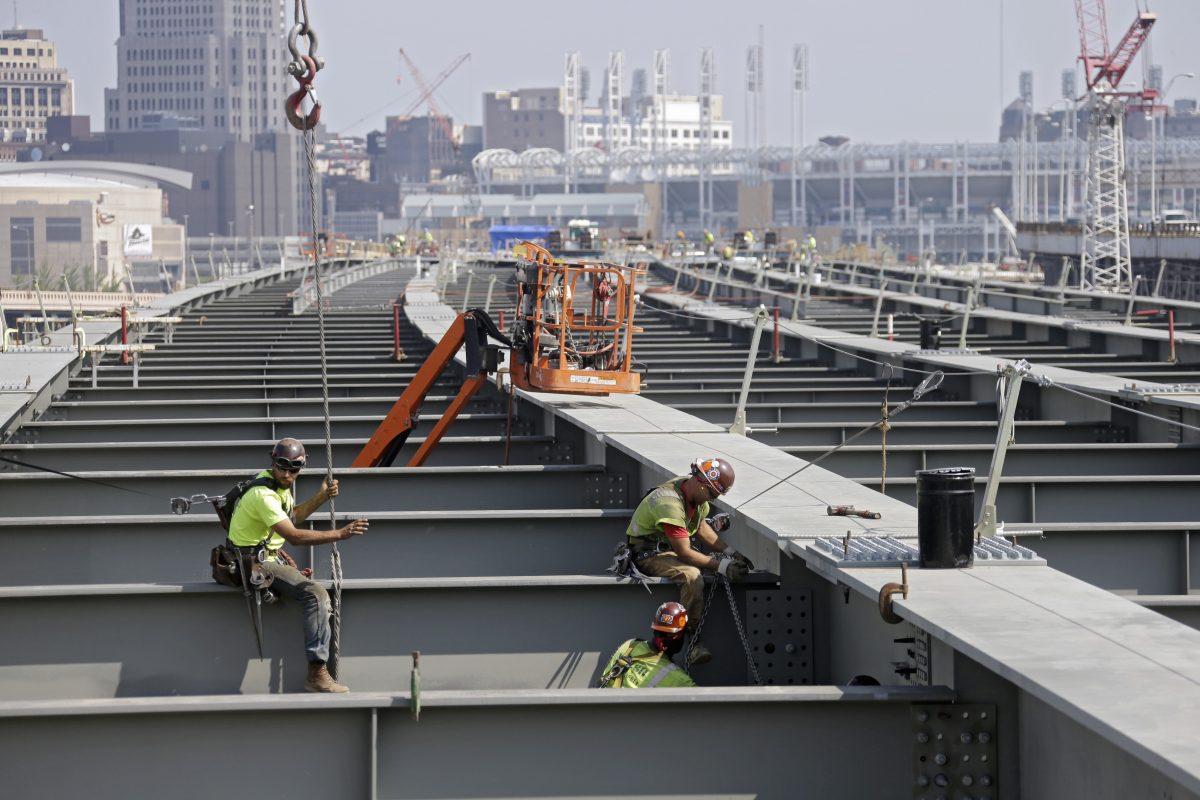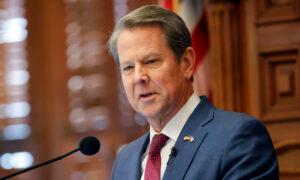Possibilities include road use charge, e-commerce delivery fee, and toll lanes to replace or supplant motor fuel tax levied by all 50 states.
LOUISVILLE, Kentucky—State Motor Fuel Tax (MFT) revenues are flat and even declining in some states because automobiles are increasingly more fuel-efficient, ensuring the trend will continue even without electric vehicles (EVs) dominating roadways, transportation funding analysts warn.
“Until we start using flying cars” new ways to pay for roads are needed, CDM Smith transportation policy specialist Andrew McLean told state lawmakers, legislative staff, and lobbyists on Aug. 5, the first day of the three-day National Conference of State Legislators Annual Legislative Summit at the Kentucky International Convention Center in Louisville.
While he’s “less optimistic” than several years ago that EVs will be a significant presence in the United States anytime soon, they contribute to transportation revenue shortfalls since they don’t pay the MFT.
EV numbers “are going up,” Feigenbaum said. “Are they going up exponentially tomorrow? No. But they are going up.”
He provided three scenarios in which 50, 30, and 10 percent of vehicles are EVs by 2050 and “all show drop-offs” in revenues.
Feigenbaum said that in Utah, “with an extremely quickly growing population,” MFT revenues are flat. Despite “a lot more miles driven,” gas consumption is “only inching up over the decade,” he said.
Virginia’s MFT revenue in 2023 was “not even close to what it was in 2018 and 2019” and in California, the “number of gasoline gallons sold is declining,” he said.
Many states are not reacting quickly to trends, he said. “That’s a problem—a big problem,” because the era when the MFT is the largest source of road funding is done, Feigenbaum said. “The fuel tax is like a rock star on a farewell tour.”
California has the highest state gas tax in the country at 69.8 cents per gallon (cpg) followed by Illinois at 67.1 cpg, Indiana at 56.1 cpg, and Pennsylvania at 62.2 cpg. Alaska’s 9 cpg is the nation’s lowest MFT with Missouri’s 17.5 cpg and Mississippi’s 18.4 cpg the next-lowest. The federal government’s 18.4 cpg hasn’t been raised in 31 years.
Most are structured as a fixed cent-per-gallon rate. But 24 states and the District of Columbia impose a variable-rate gas tax that adjusts or “indexes” with inflation.

‘Cafeteria Plan Solutions’
Numerous proposals are being implemented or pondered in state capitals. Panel moderator Kansas Rep. Shannon Francis (R-Liberal) said there “may not be one solution” with lawmakers looking at “cafeteria plan solutions.”
On the menu are road usage charge (RUC), retail delivery fees (RDF), and managed toll lane programs, as well as imposing kilowatt charging fees and high registration fees on EVs.
An RUC program is based on miles driven, not gallons consumed. Drivers would pay with transponders or electronic passes now used to pay for use of toll roads that track mileage but not location or via odometer readings.
Oregon, which adopted the world’s first gas tax in 1919, implemented the nation’s inaugural RUC program in 2015. Utah’s program was established in 2020 but only began in January 2023, and Virginia enacted its program in July 2022.
Hawaii’s RUC program begins in July 2025 and will be mandatory for EVs in 2028.
McLean, a former Maine legislator, said RUC programs will require higher administrative costs than the MFT, “one of the most efficiently collected taxes in the country,” and has fostered privacy concerns because it would require data collection from private vehicles.

‘Doorstep Taxes’ And ’Lexus Lanes’
Many states are studying RDF programs, a “Doorstep Tax” that assess packages delivered by Amazon, UPS, FedEx, and other commercial shippers and e-commerce retailers, with Colorado and Minnesota enacting them and Washington considering doing so, he said.
Colorado’s charges 28 cents on every delivery regardless of value. Adopted in 2022, it generated $75.9 million in its first year, McLean said. Businesses with $500,000 or less in sales are exempt.
Minnesota lawmakers enacted an RDF in 2023 that went into effect in July 2024. It levies 50 cents on deliveries of $100 or more. It is projected to generate $59 million. Businesses with $1 million or less in annual sales are exempt.
In January 2023, the Washington State Transportation Commission projected a $600 million MFT decline by 2050. A 30-cent RDF could generate between $45 million and $112 million in 2026 and as much as $160 million by 2030.
The prospective RDF is opposed by the National Federation of Independent Business, Association of Washington Business, Washington Retail Association, Washington Hospitality Association, and the Washington Trucking Association, among others.
McLean, who led CDM Smith’s RDF study Washington lawmakers are reviewing, said that, like with RUCs and other revenue-generators, no one program will replace the MFT.
“It’s one leg of a multi-legged stool,” he said.
Fifteen states have adopted pilot programs testing toll-managed lanes as a way to relieve congestion and avoid building toll roads, he said.
“A funny thing happened on the way to the toll road,” Tomlinson said, noting that collectively, the 70 managed toll lanes—including 14 in California and 11 in Florida—generated $4.2 billion in revenues in 2022.
The toll-managed lanes are new, not redesigned “general purpose” lanes. “You are not reducing existing choices but adding more,” he said.
Critics call managed toll lanes “Lexus Lanes” but Tomlinson said they’re more like “Honda Lanes” since studies show middle- and low-income drivers use the lanes most frequently because time is money.
Paying a toll to avoid being stuck in traffic could mean “not paying $1 a minute” if late picking children up from child care, he said.
Some managed toll programs have static pricing, while in others, the “price goes up during rush hour,” Tomlinson said noting it’s cheaper to build toll lanes than toll roads.
It’s part of a matrix of possible revenue-generators, he said, agreeing with fellow panelists that states “cannot solve urban congestion with any one thing.”
Feigenbaum said that one thing is sure—the federal 18.4 cpg has not increased since 1993 and “there is no hope” Congress will raise it anytime in the foreseeable future.
Original News Source Link – Epoch Times
Running For Office? Conservative Campaign Consulting – Election Day Strategies!


